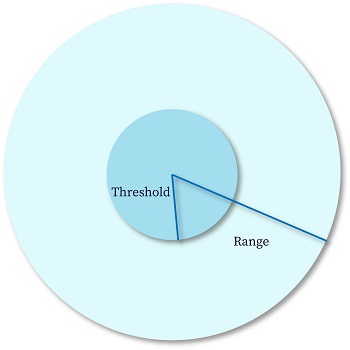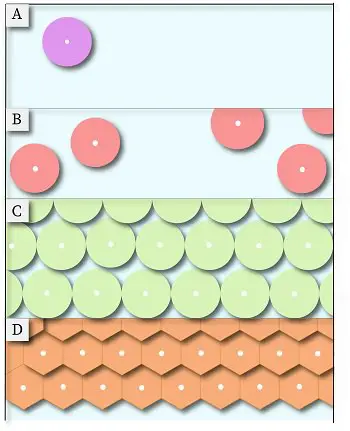Introduction:
It was first developed by the German Geographer Walter Christaller in 1933 AD. It is a
spatial theory in urban geography that attempts to explain the reasons behind the distribution patterns, sizes and a number of cities and towns around the world. Christaller developed this theory after the study of settlement patterns in Southern German which analysed the relationship between settlements of different sizes and related their economic activites with the population.
Assumptions:
- An even (flat) terrain
- Evenly distributed population
- Evenly distributed resources
- Similar purchasing power
- Preference for the nearest market
- Equal transportation cost
- Perfect competition
Two main concepts of Central Place Theory
As per Walter Christaller, Central Place Theory is based on 2 fundamental concepts which are “Threshold” and “Range”
Threshold – The minimum population needed to make a service viable at a particular place. If this size is not reached then a particular activity will not start or it will be closed down.
Range – This is the maximum distance a consumer is willing to travel to purchase good or avail a service, beyond this distance consumer will not travel as the distance traveled for good/service will outweigh the benefit. Range has two limits, Upper Limit denotes an area beyond which there will be no buyer willing to travel. And, Lower Limit denotes an area need for a firm to make profits and have sufficient demand.
Sizes of settlements/communities as per central place theory
Walter Christaller gave a system with 5 sizes of settlements based on population. The smallest unit is Hamlet which is considered a rural community and the largest unit is Regional Capital. The rank order of central places in ascending order include:
1. Hamlet
2. Village
3. Town
4. City
5. Regional Capital/ Metropolis
The arrangement of the Central places/ settlements:
As transport is equally easy in all direction, each central place will have a circular market area as shown in C in the following diagram:
As transport is equally easy in all direction, each central place will have a circular market area as shown in C in the following diagram:
However, the circular shape of the market areas results in either un-served areas or over-served areas. To solve this problem, Christaller suggested the hexagonal shape of the markets as shown in D in the above diagram. Within a given area there will be fewer high order cities and towns in relation to the lower order villages and hamlets. For any given order, theoretically, the settlements will be equidistant from each other. The higher order settlements will be further apart than the lower order ones.
Principles in the arrangement of the central places:
Christaller’s theory gives 3 principles which are the marketing principle, transport principle and administrative principle for orderly arrangements and the formation of hierarchy. Settlements are regularly spaced – equidistant spacing between same order centers, with larger centers farther apart as compared to smaller centers. The market area is hexagonal shaped as it is free from overlapping, most efficient in both number and function. Three Principles of Christaller for determining distribution of central places in a region.
- Marketing principle: If the distribution is entirely based on the range of the good, then it would result in evenly spaced central places with hexagonal markets area.
- Traffic principle: If any central place (city) is smaller in size than expected than it be because of lower accessibility (not falling on major transport route) and vice-versa
- Separation principle: Spacing and sizing of Central places can sometimes be distorted due to socio-political consideration.
The different layouts predicted by Christaller have K- values which show how much the Sphere of Influence of the central places takes in — the central place itself counts as 1 and each portion of a satellite counts as its portion:
1. Marketing Principle (K=3)
2. Transport Principle/ Traffic Principle (K=4)
3. Administrative Principle (K=7)
The three principles of central place theory are as follows
Marketing Principle (K=3): As per this the market area of a higher order occupies one-third (1/3 part) of the market area of each of the consecutive lower size place(node) which lies on its neighbor. The lower size nodes (6 in numbers and 2nd larger circles) are located at the corner of the largest hexagon around the high-order settlement. Each high-order settlement gets 1/3rd of each satellite settlement (which are 6 in total), thus K = 1 + 6×1/3 = 3.
With K=3 the transport network is not efficient even when the distance traveled is reduced. This is because of the absence of transport links (network) between the larger places (nodes).
Transport Principle (K=4): This provides for most efficient transport network. High order place half of the market area of 6 neighboring lower order places located on the edge of the hexagon formed by high order settlement. There are maximum central places possible. These are located on the main transport routes connecting the higher order center. The transportation principle involves the minimization of the length of roads connecting central places at all hierarchy levels. In this system of nesting, the lower order centers are all located along the roads linking the higher order centers. This alignment of places along a road leads to minimization of road length. However, for each higher order center, there are now four centers of immediate lower order, as opposed to three centers under the marketing principle.
Administrative Principle (K=7): According to K = 7 administrative principle (or political-social principle), settlements are nested according to sevens. The market areas of the smaller settlements are completely enclosed within the market area of the larger settlement. Since tributary areas cannot be split administratively, they must be allocated exclusively to a single higher-order place. Efficient administration is the control principle in this hierarchy
Criticisms
1. It's assumptions are flawed and unrealistic.
2. Transportation costs are not equal in all direction.
3. Rural market are not evenly distributed.
4. People or resources are never perfectly distributed.









0 Reviews:
Post a Comment